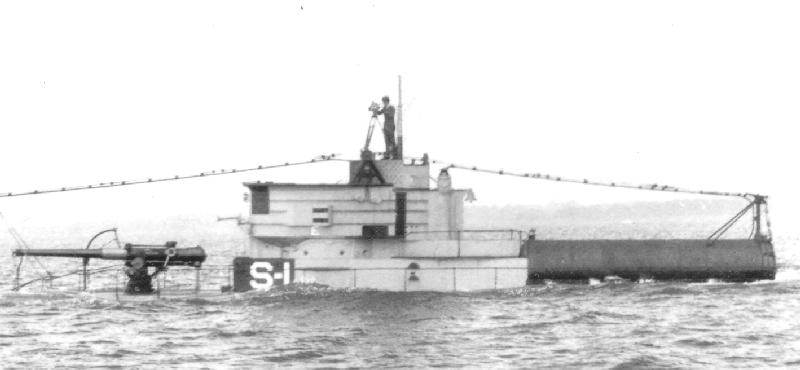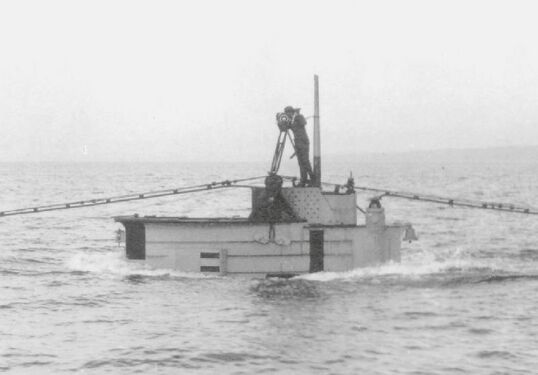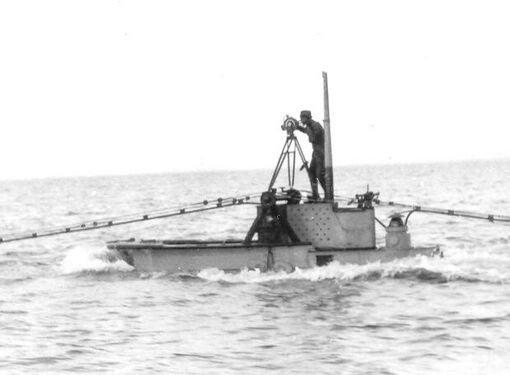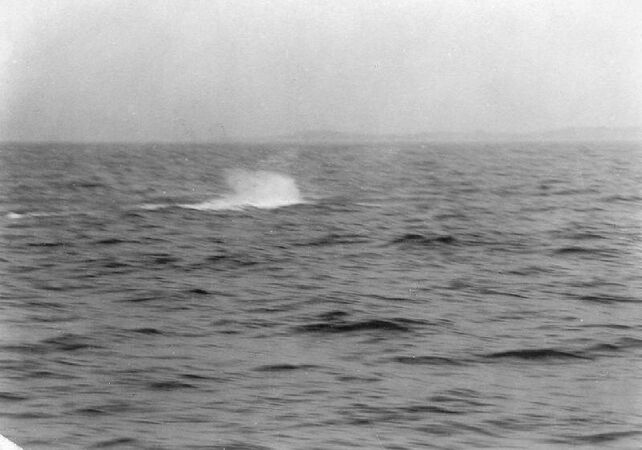S-1: Difference between revisions
Pbcjohnston (talk | contribs) Added new Header |
Pbcjohnston (talk | contribs) Added conversion photos |
||
| Line 19: | Line 19: | ||
<small>Photo provide by his grandniece, Patricia M. Lynn.</small> | <small>Photo provide by his grandniece, Patricia M. Lynn.</small> | ||
[[File:Red bar sub new.jpg]] | |||
<center> | |||
<gallery mode="packed" perrow=2 widths="400px" heights="300px"> | |||
File:O-8 and S-1.jpg | |||
File:S-1 at Portsmouth stbd side Dec 22.jpg | |||
File:S-1 stbd midships Dec 22.jpg | |||
File:S-1 and hangar port side.jpg | |||
</gallery> | |||
</center> | |||
Four photos that show the conversion work being done to S-1 so that she could carry out the Navy's first, and as it turned out only, tests with launching an airplane from a submarine, Portsmouth Navy Yard, Kittery, Maine in the winter of 1922-1923. The first photo shows S-1 alongside the work pier, with [[O-8|'''O-8''']] maneuvering into the berth to the left. S-1 has had her aft superstructure removed in preparation to have the watertight aircraft storage cylinder installed. Work is also being done to her forward superstructure to remove the original [https://pigboats.com/index.php?title=Gun_photos_%26_information#3%22/23_Mk_9 '''3"/23 caliber Mk 9 deck gun''']. In its place will be a foundation for and installation of a much more substantial [https://pigboats.com/index.php?title=Gun_photos_%26_information#4%22/50_Mark_12_Various_Mods '''4"/50 caliber Mk 12 Mod 6 gun''']. | |||
The second photo shows the work nearing completion. She had a widened aft superstructure and the cylinder has been installed atop of it. She has also received a flared out sponson for the 4"/50 caliber gun on the deck forward of the conning tower fairwater. The gunboat USS Wilmington (PG-8) is moored in the background. | |||
The third and fourth photos show views of the aircraft cylinder from aft. The hemispherical door is hinged on the bottom and sealed to the cylinder by 11 individually bolted flanges. It proved to take an undesirable amount of time to open the door due to the bolted flanges. When open the door swung downward into a recess in the deck, allowing the aircraft to be pulled out and assembled for flight. | |||
<small>NARA photos via Historylink101.com.</small> | |||
[[File:Red bar sub new.jpg]] | [[File:Red bar sub new.jpg]] | ||
| Line 63: | Line 82: | ||
[[File:Red bar sub new.jpg]] | [[File:Red bar sub new.jpg]] | ||
<center> | |||
<gallery mode="packed" widths="350px" heights="250px"> | <gallery mode="packed" widths="350px" heights="250px"> | ||
File:S-1 diving 4.jpg | File:S-1 diving 4.jpg | ||
Revision as of 21:28, 4 June 2025
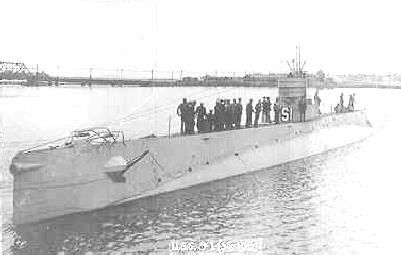
Photo in the private collection of Ric Hedman

Photo courtesy of the Boston Public Library, Leslie Jones Collection. Used with permission.
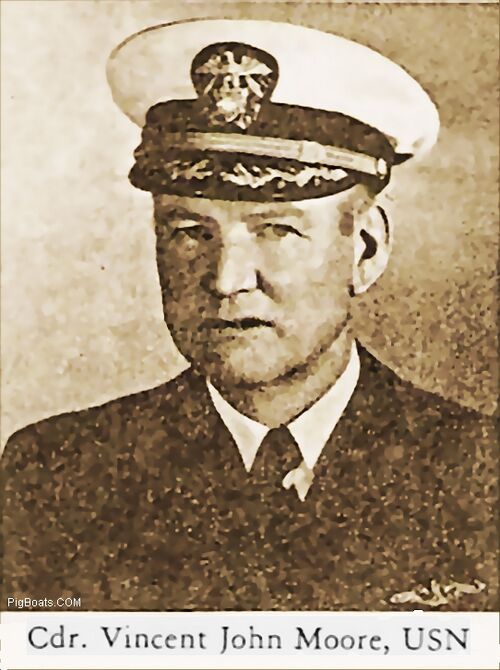
Photo provide by his grandniece, Patricia M. Lynn.
Four photos that show the conversion work being done to S-1 so that she could carry out the Navy's first, and as it turned out only, tests with launching an airplane from a submarine, Portsmouth Navy Yard, Kittery, Maine in the winter of 1922-1923. The first photo shows S-1 alongside the work pier, with O-8 maneuvering into the berth to the left. S-1 has had her aft superstructure removed in preparation to have the watertight aircraft storage cylinder installed. Work is also being done to her forward superstructure to remove the original 3"/23 caliber Mk 9 deck gun. In its place will be a foundation for and installation of a much more substantial 4"/50 caliber Mk 12 Mod 6 gun.
The second photo shows the work nearing completion. She had a widened aft superstructure and the cylinder has been installed atop of it. She has also received a flared out sponson for the 4"/50 caliber gun on the deck forward of the conning tower fairwater. The gunboat USS Wilmington (PG-8) is moored in the background.
The third and fourth photos show views of the aircraft cylinder from aft. The hemispherical door is hinged on the bottom and sealed to the cylinder by 11 individually bolted flanges. It proved to take an undesirable amount of time to open the door due to the bolted flanges. When open the door swung downward into a recess in the deck, allowing the aircraft to be pulled out and assembled for flight.
NARA photos via Historylink101.com.
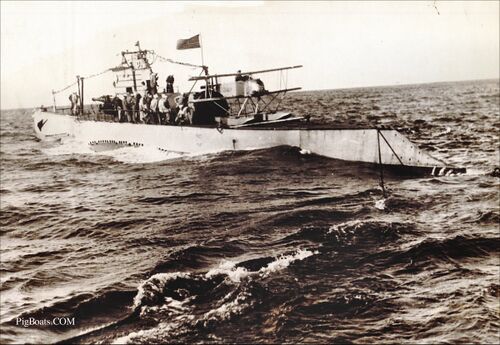
Newspaper Photo Caption: THE FIRST SUBMARINE AIRPLANE IS TESTED OFF NEW LONDON
New London, Connecticut -- The United States Navy held the first tryout of the "Peanut Plane" off New London recently. It is a tiny three cylinder airplane installed in a waterproof casing on the deck of the U.S. submersible S-1 and can be launched in the short time of nine minutes. The plane weighs only 1000 pounds and is flown by the first "Submarine Pilot" LT Dolph C. Allen. Photo shows the plane completely assembled and ready for flight, which is launched by lowering the stern of the submarine. 9-2-26
It should be noted that the launching time of nine minutes was an initial estimate only. In actual practice it turned out to be more like 30-40 minutes in calm weather and good conditions.
The first full cycle of surfacing, assembly, launching, retrieving, disassembly, and submergence took place on 28 July 1926 on the Thames River at New London.
News photo in the private collection of Ric Hedman.
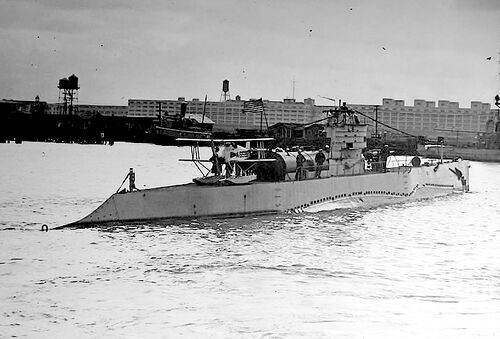
U.S. Navy photo
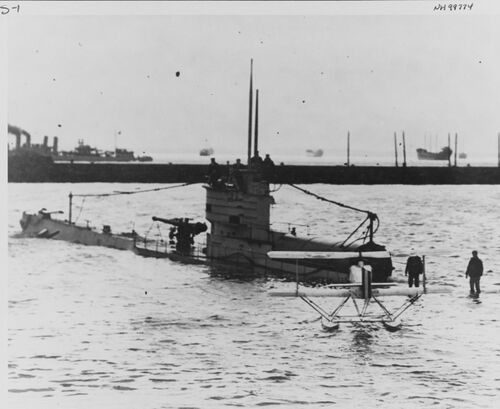
NHHC photo NH 99774.
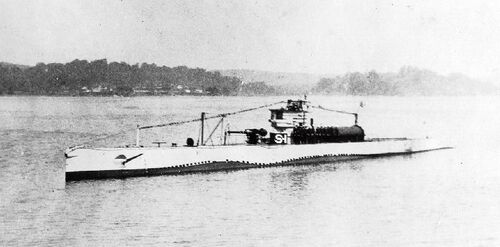
Photo in the private collection of Ric Hedman.
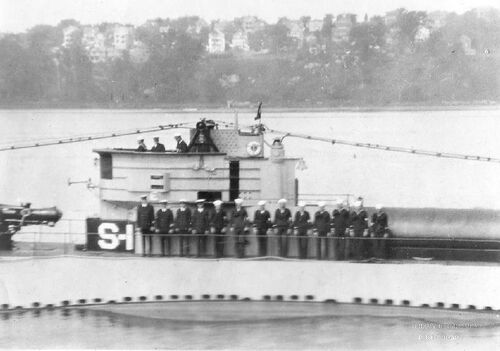
U.S. Navy photo
Photos in the private collection of Ric Hedman
Photos in the private collection of Ric Hedman

Photo in the private collection of Ric Hedman

Photo in the private collection of Ric Hedman
Page created by:
Ric Hedman & David Johnston
1999 - 2023 - PigBoats.COM©
Mountlake Terrace, WA, Norfolk, VA
webmaster at pigboats dot com





